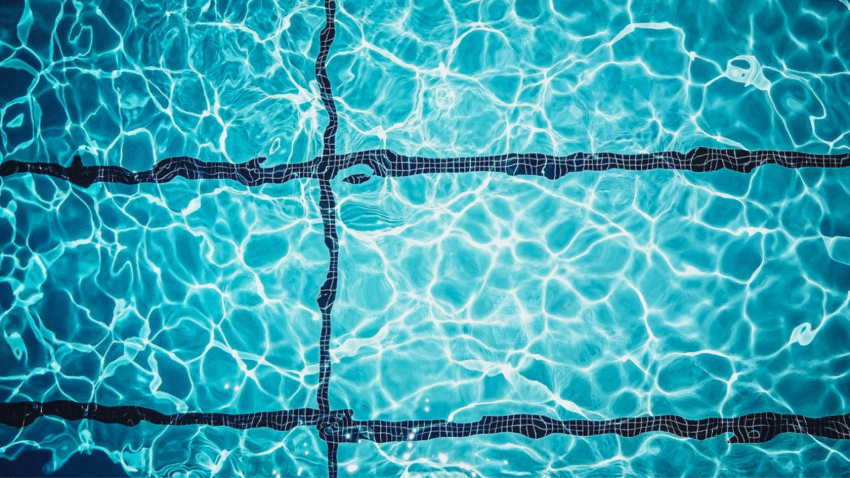Introduction
Is your fiberglass pool starting to show signs of wear like chalky surfaces, cracks, or faded color? Over time, exposure to UV rays, pool chemicals, and water pressure can degrade even the toughest fiberglass finish. In this step-by-step guide, you’ll learn how to resurface a fiberglass pool from start to finish — including prep work, repair, and applying a fresh topcoat for a smooth, beautiful, and long-lasting result.
Why Resurfacing a Fiberglass Pool Matters
Fiberglass pools are known for their durability, but they don’t last forever without maintenance. When the gelcoat layer begins to deteriorate, problems can follow:
- Rough or chalky texture
- Blistering or spider cracks
- Discoloration or staining
- Leaks from surface damage
Resurfacing restores your pool’s look, improves swimmer comfort, and helps prevent deeper structural issues from developing. A proper resurface can extend your pool’s lifespan by another 10–15 years.
Step-by-Step Guide to Resurfacing a Fiberglass Pool
Step 1: Drain and Clean the Pool
Start by completely draining your fiberglass pool. Once drained:
- Rinse away loose debris with a hose or pressure washer
- Scrub the entire surface using TSP (trisodium phosphate) or a degreasing cleaner to remove oils and contaminants
- Rinse thoroughly and allow to dry for at least 24 hours
⚠️ Caution: Never leave a drained fiberglass pool empty for long. Hydrostatic pressure from groundwater can cause it to shift or pop out. Complete resurfacing within a few days.
Step 2: Sand the Entire Surface
Use an orbital sander or rotary buffer with 60–80 grit sandpaper to roughen the gelcoat:
- Sand evenly over the entire surface to help the new coating bond
- Pay special attention to rough, blistered, or chalky areas
- Vacuum or wipe away dust between sanding passes
💡 Tip: Wear a respirator and safety goggles — fiberglass dust can irritate your lungs and skin.
Step 3: Repair Any Cracks or Blisters
Inspect the surface for:
- Spider cracks
- Blisters (osmosis bubbles)
- Chips or gouges
To repair:
- Grind out any cracks or blisters using a rotary tool or sanding disc
- Clean the area with acetone or alcohol
- Fill the hole or crack with fiberglass repair resin and a fiberglass patch or cloth
- Let cure fully, then sand smooth
💡 Pro Tip: Use a colored gelcoat filler to make blending easier later.
Step 4: Apply Epoxy Primer (Optional but Recommended)
Some resurfacing systems include a high-build epoxy primer that helps seal the surface and improve adhesion.
To apply:
- Mix the two-part epoxy per instructions
- Use a roller to apply evenly across the pool shell
- Let it cure (usually 4–8 hours, depending on product)
⚠️ Note: Only use primer products compatible with your resurfacing topcoat.
Step 5: Apply the New Gelcoat or Pool Paint
There are two common types of finishes used in fiberglass pool resurfacing:
Option 1: Gelcoat Resurfacing
- Offers a smooth, long-lasting, glossy finish
- More difficult and expensive to apply
- Requires spray equipment and multiple coats
Option 2: Epoxy Pool Paint
- Easier DIY option with good durability (5–8 years)
- Available in brush/roller application
- Requires 2–3 coats with proper drying time
To apply epoxy paint:
- Stir thoroughly — do not shake
- Use a roller with a long handle for even application
- Start at the deep end and work your way to the shallow end
- Allow proper drying time between coats (usually 6–8 hours)
- Apply a second and possibly third coat for best coverage
💡 Tip: Choose a bright color like white, blue, or aqua to give your pool a clean, fresh look.
Step 6: Cure and Refill the Pool
Once your final coat is applied:
- Allow the surface to cure for 5–7 days
- Do not refill early — water pressure can cause bubbling or blistering
- Once fully cured, begin refilling the pool slowly
After refilling:
- Test and balance your pool water chemistry
- Avoid shocking the pool for at least one week after resurfacing
Common Mistakes to Avoid
- Not Roughening the Surface Enough
A smooth surface prevents new coatings from bonding. Always sand thoroughly. - Skipping Repairs
Covering over cracks or blisters may hide the damage but won’t fix it — the problems will return. - Using Incompatible Products
Don’t mix brands or product types without confirming compatibility. - Rushing Dry Times
Curing takes time. Refilling too early can ruin the finish. - Ignoring Safety Gear
Fiberglass particles and fumes can be harmful. Wear gloves, respirators, and protective clothing.
Extra Tips & Pool Hacks
- Work in the Morning or Evening: Avoid painting or applying coatings in direct sunlight or high heat.
- Use a Pool Timer After Refilling: Once full, run your pump and filter system for 8–12 hours a day to circulate and stabilize water.
- Keep a Maintenance Log: Record resurfacing dates and products used for future reference.
Need help maintaining your pool’s shine? Read our guide on [how to maintain pool water clarity all season long].
Conclusion
Resurfacing a fiberglass pool may seem like a big task, but with the right steps, it’s completely doable — even for dedicated DIYers. By sanding the surface, repairing damage, and applying a fresh coat of gelcoat or epoxy, you can restore the look and performance of your pool for years to come. Take your time, follow the process, and your pool will look brand new again.
📌 Bookmark this guide to have on hand for your next pool renovation project!
